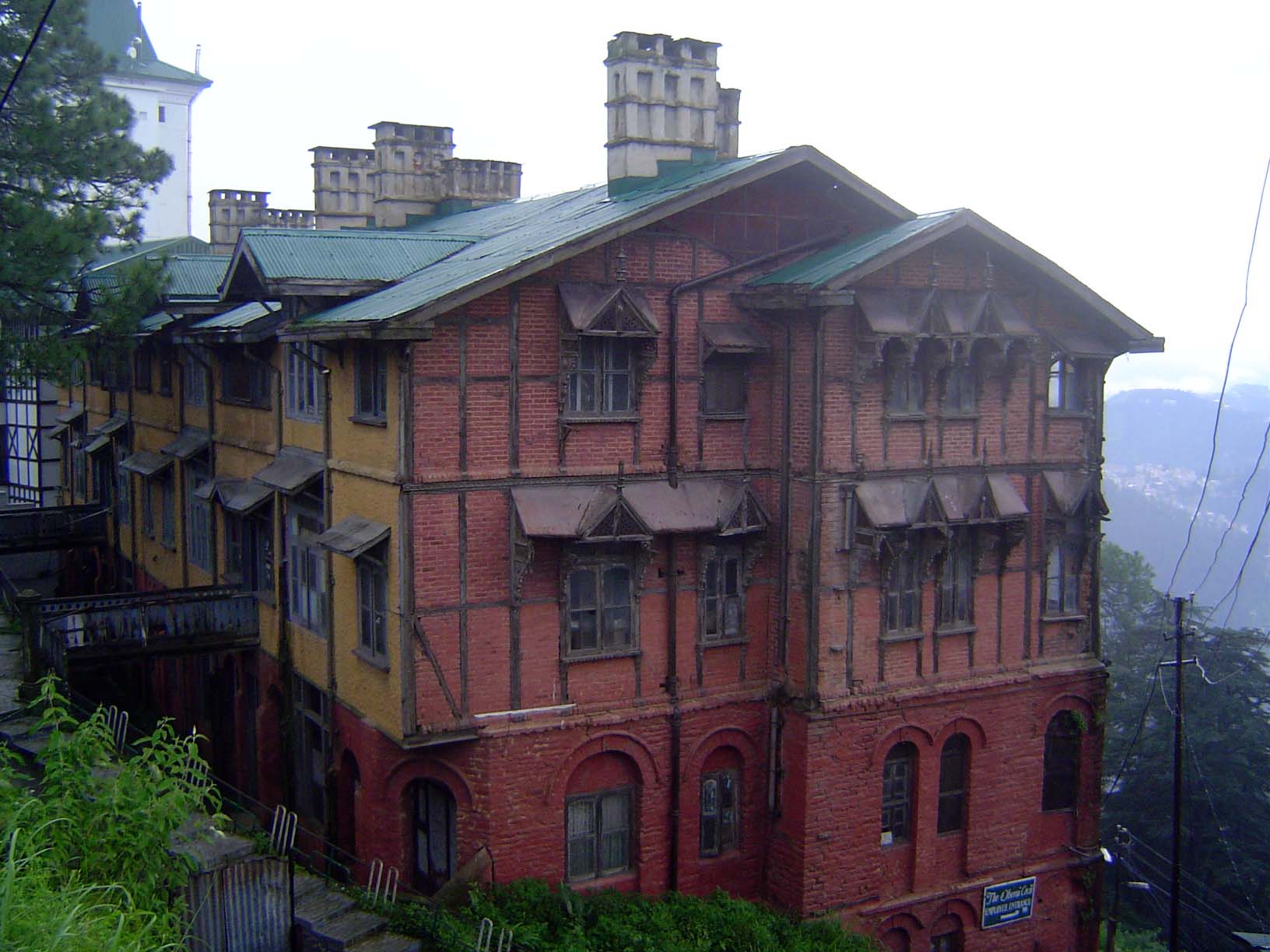
A quick look at old hotels, banks, shops, and assorted services.
Tendril Cottage, built in 1877. It's very close to Viceregal Lodge and for many years housed the Foreign Office of the Government of India. It was sold in 1902 to Florence Elizabeth Hotz, who opened it as the Hotel Cecil. The hotel was sold to a hotelier named Faletti, who had a very well-known hotel of that name in Lahore, and in 1916 he created the Associated Hotels of India, which included the Cecil, Corstorphans (also in Shimla), Faletti's Lahore, Maiden's Delhi, Flashman Rawalpindi, and the Cecil at Murree. Buck wrote (p. 172), "Today [the 1920s] the Cecil is par excellence the hotel of the East."
He was probably thinking of this new block, opened in the 1920s.
The Cecil continues to grow as part of the Oberoi chain; its main building today is the large white one on the left. Not much to look at, but very nice inside.
Rooms are ranged around an atrium.
At the other end of the ridge is Clarke's Hotel, originally the Carlton, now part of the Oberoi chain though independently flagged.
Very much simpler, the old Dalziel Hotel, built in the 1840s and sold in 1890 to the same Mrs. Hotz who would later buy the Cecil. It remained with her or her family until 1972 and is still very much in business.
The YWCA.
Lost in the mist, the Corstorphans Hotel is now used as a residence hall for doctors at a nearby hospital.
Time warp.
Sign.
What? Well, that's what's inside the Willow Bank guest suite. A private law library.
Old photos show a lineup of banks along this stretch of the mall. They included Lloyds Bank, the Mercantile Bank of India, the Punjab National Bank, and Grindlay and Co.
You can make out the name Grindlay; a few years ago, the sign below read Barclay's.
The old facades, with projecting wooden colonnades and porches, have all been removed.
The general post office was built in 1882 and is reportedly the oldest in North India.
Across from the Dalziel Hotel, this site has housed the Bank of Upper India and the Bank of Bengal. In 1924 it became the Imperial Bank—its vault doors still carry that name. After Independence it became the State Bank of India.
Noticed that there's no traffic? Here's Buck on the subject (p. 201): "Bicycles are now allowed by the municipality on the Sanjouli Mashobra road between fixed hours on certain conditions, and motor cars belonging to the Viceroy, the Governor and Commander-in-Chief are permitted on the main roads of the station. No one else is privileged to drive a car in Simla" It's still pretty much that way: try driving up top and see what happens! (In theory, a stiff fine; in practice, at least sometimes, a stern warning.)
A smaller bank.
A store-front vestige of Kipling's Kim.
This building opened in 1925 as The Prince of Wales Theater.
Pitman lives!
Gaiety Theater under repair. Buck writes (p. 34) that Dalhousie, the energetic Governor General complained that "we have had such festivities here as never were, balls here, balls there, balls by the society, amateur plays, concerts, fancy fairs, investitures of the Bath, etc. I quite sigh for the quiet of Calcutta."
Garage.
Mechanics across the street.
Side street.